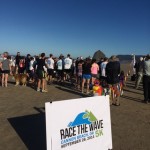AUSTIN, Texas – At the request of the state, the Federal Emergency Management Agency (FEMA) has added Cameron County to the Texas disaster declaration of Nov. 25. The counties now designated for Individual Assistance include Bastrop, Brazoria, Caldwell, Cameron, Comal, Galveston, Guadalupe, Hardin, Harris, Hays, Hidalgo, Liberty, Navarro, Travis, Willacy and Wilson Counties.
Homeowners and renters with damage or loss as a result of the severe storms, tornadoes, straight-line winds and flooding that occurred Oct. 22 to Oct. 31 may immediately register for disaster assistance.
Survivors can apply online at DisasterAssistance.gov or by phone (voice, 711 or relay service) at 800-621-3362. TTY users should call 800-462-7585. The toll-free lines are open 7 a.m. to 10 p.m. seven days a week. Applicants will be asked to provide:
- Social Security number
- Address of the damaged primary residence
- Description of the damage
- Information about insurance coverage
- A current contact telephone number
- An address where they can receive mail
- Bank account and routing numbers for those preferring direct deposit of funds
Assistance for eligible survivors can include grants for temporary housing and home repairs, and for other serious disaster-related needs, such as medical and dental expenses or funeral and burial costs.
Low-interest disaster loans from the U.S. Small Business Administration are available for businesses of all sizes (including landlords), private nonprofits, homeowners and renters. Disaster loans help to fund repairs or rebuilding efforts and cover the cost of replacing lost or disaster-damaged personal property. Economic Injury disaster loans are available to businesses and private-nonprofits to assist with working capital needs as a direct result of the disaster.
Eligible survivors should register with FEMA even if they have insurance. FEMA cannot duplicate insurance payments, but under-insured applicants may receive help after their insurance claims have been settled.
###
All FEMA disaster assistance will be provided without discrimination on the grounds of race, color, sex (including sexual harassment), religion, national origin, age, disability, limited English proficiency, economic status, or retaliation. If you believe your civil rights are being violated, call 800-621-3362 or 800-462-7585(TTY/TDD).
FEMA’s mission is to support our citizens and first responders to ensure that as a nation we work together to build, sustain, and improve our capability to prepare for, protect against, respond to, recover from, and mitigate all hazards.
The SBA is the federal government’s primary source of money for the long-term rebuilding of disaster-damaged private property. SBA helps businesses of all sizes, private non-profit organizations, homeowners and renters fund repairs or rebuilding efforts and cover the cost of replacing lost or disaster-damaged personal property. These disaster loans cover losses not fully compensated by insurance or other recoveries and do not duplicate benefits of other agencies or organizations. For more information, applicants may contact SBA’s Disaster Assistance Customer Service Center by calling 800-659-2955, emailing disastercustomerservice@sba.gov, or visiting SBA’s website at www.sba.gov/disaster. Deaf and hard-of-hearing individuals may call 800-877-8339.
Visit www.fema.gov/texas-disaster-mitigation for publications and reference material on rebuilding and repairing safer and stronger.
Link –







